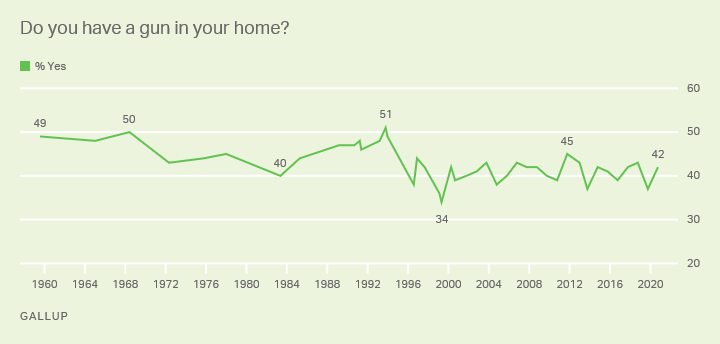The Plot Thickens
A white supremacist riot planned by the Patriot Front to disrupt the Pride Celebration in Coeur d’Alene last Saturday, June 11, was nipped in the bud.
The rioters were intercepted by local law enforcement acting on a tip from a concerned citizen who saw 31 men (looking suspiciously prepared for a fight) loading into a moving van.
The potential rioters included two men with strong family and ideological ties to Matt Shea’s “On Fire Ministries” on Pacific Ave in Spokane, Pastor Ken Peters’ “Patriot Church” (formerly “Covenant”) on Princeton in near-north Spokane, and Peters’ TCAPP (The Church at Planned Parenthood).
We are indebted to the work of reporters and writers, Luke Baumgarten of Range Media, whose brilliant investigative report is copied below, and Daniel Walters of The Inlander whose article appeared in The New York Times on Sunday, June 12th.
Note that as soon as the 31 Patriot Fronters were arrested in Coeur d’Alene, attempts were made on Twitter and on the internet (see below) to foster the idea that “antifa” was responsible and that all of this was essentially a false flag operation—the same whack-o, convoluted conspiracy theory right wingers floated about the January 6th insurrection. It’s a great tactic: stir up trouble over which the instigators can gloat while offering to soft-headed followers that the bad stuff is really the work of the evil, underhanded, conspiring “other side”.
The cancer that we hoped was cured when the Aryan Nations compound outside of Hayden Lake was torn down twenty years ago is recurring. Called out by far right elements of today’s Republican Party, its local and distant metastases are growing again. Pay attention.
Keep to the high ground,
Jerry

Patriot Front, On FireBY LUKE BAUMGARTEN – 13 JUN 2022 – VIEW ONLINE →

Mishael and Josiah Buster have lived in a home owned by Matt Buster, a leader in Matt Shea’s church, and appear to be family members. Mishael appears to be or have been a member of the church’s “online team.”
Two of the Patriot Front members arrested in Cd’A over the weekend have ties to Matt Shea and his church.
Of the 31 Patriot Front members arrested in Coeur d’Alene Saturday, two have ties to Matt Shea and one appears to be part of the team at Shea’s On Fire Ministries. For a rundown on the arrest, check out Daniel Walters’ piece in the New York Times.
Patriot Front is a Texas-based White Nationalist hate group that broke away from another similar group, Vanguard USA, after the 2017 Unite the Right rally in Charlottesville that resulted in the murder of Heather Heyer. Patriot Front has had an active presence in the Inland Northwest since at least March 2021 when people began noticing stickers and posters popping up at busy intersections throughout the region, along the Centennial Trail in Riverfront Park, and on the campus of the embattled North Idaho College. A mural of George Floyd on the side of Shacktown Community Cycle in downtown Spokane was defaced twice, the second time with a stencil of the Patriot Front logo. In the leadup to Saturday’s event in Coeur d’Alene, at least one far-right Twitter personality was referring to it as Charlottesville II.
Among those arrested Saturday, only one suspect was initially identified as being from Spokane: Mishael Buster.
It now appears that Josiah, the other Buster arrested, used to live in the same Hillyard house as Mishael and appears to still be registered to vote there. He has since moved to Watauga, Texas, which is the address he gave police in Coeur d’Alene. Watauga is a suburb in the Dallas-Fort Worth area. Thomas Rousseau, the founder of Patriot Front who was also arrested Saturday, lives in nearby Grapevine, TX.

According to the Spokane County Assessor, that Yale Street home in Spokane is owned by Matt and Diane Buster.
Matt Buster is a well-known associate of Matt Shea, the preacher and former Washington state legislator who was expelled from the State Republican Caucus after an investigation found he had committed acts of domestic terrorism. Buster has helped Shea for years with various rallies and protests, such as The Church at Planned Parenthood (TCAPP) and several of the Reopen protests Shea organized in 2020 and 2021. Activists have asserted that Matt is Josiah and Mishael’s father, but RANGE was unable to independently confirm that.

Matt Buster has been filmed with Shea at numerous rallies in Spokane.(Photos courtesy of @queer_will)
As has become common both nationally and locally, when arrests like these are made, journalists and activists immediately went to work to make connections and offer context on those arrested. Many of the Patriot Front members were well known, and documentation came relatively quickly.
The Busters took a little longer to run down, but local journalists including RANGE, and activists started making connections midday Sunday. Stronger Together Spokane, a far-right watchdog Twitter account, first pointed out the connection publicly Sunday evening around 6 pm.
Shea and his wife Viktoriya are founders and Senior Pastors of On Fire Ministries. The On Fire staff page lists Matt Buster as leading “Real Men’s Ministry” at the church.
In a Facebook post celebrating On Fire Ministries moving to a new location, Worship Pastor Gabe Blomgren thanked the Church’s “online team” members, including “Shael Buster” — presumably short for Mishael.

Shea and Blomgren were also in Coeur d’Alene on Saturday, leading a small protest march with bullhorns that did not appear to be directly connected to the Patriot Front action.
At roughly the same time as the arrest was taking place, Shea and Blomgren were seen leading a group of protestors in Coeur d’Alene. At one point, the group stopped in front of the Coeur d’Alene Press building and Blomgren led them in a rendition of Lee Greenwood’s “God Bless the USA.” An unknown man said a prayer that “one day the Coeur d’Alene Press would one day be a bastion of righteousness.”
The group moved to the county courthouse and eventually to the Human Rights Education Institute, where Shea prayed aloud that God was the author of all rights, and “government can never take it away, and they can never say under the euphemism of human rights, that the rights of Christians do not matter.”
In addition to his role at On Fire Ministries, Gabe Blomgren is the cohost with Caleb Collier of a podcast called “Church and State,” which has dedicated several segments recently to antagonizing the LGBTQIA2S+ community, including a May 31 podcast entitled “Pride month is an indicator that the doomsday clock is ticking.”
On Saturday, a story posted to the official Church and State Facebook page shared a video of law enforcement opening the U-Haul with the caption “This is HUGE Antifa stopped.”

The post echoed several conspiracy theories that began flying soon after video of the arrest hit social media. Some claimed that the men in the U-Haul are either Antifa or paid by the Biden administration. Others went as far as to say Patriot Front itself is not a real white nationalist organization, but a psyop — a psychological operation — of the government.
It’s unclear whether the person who posted that story knew that one of Blomgren’s colleagues was on board the U-Haul at that time.
ALSO OF NOTE:
According to Tarrant County property records, Josiah Buster owns the Watauga, Texas, home he listed as his address. It also serves as the registered office of a Roofing Company that Buster helps run, and which is owned by a man, Cameron Schronk, Buster claims to have met while serving in the Army Rangers. Josiah Buster appeared on the company website as Operations Manager as of Sunday evening. By Monday morning, his bio had been taken down.
A second man arrested in Coeur d’Alene, Connor Patrick Moran, listed the same Spring Creek address, but his connection to Josiah Buster is unclear.
By midday Sunday, all 31 men arrested had been released on bail.
This is a developing story. We will update it with new information as it becomes known.
Former WA Rep. Matt Shea at the center of controversy surrounding Ukrainian orphanage evacuation
Thank you for reading and supporting RANGE! If you found this article interesting, please share it with a friend.






